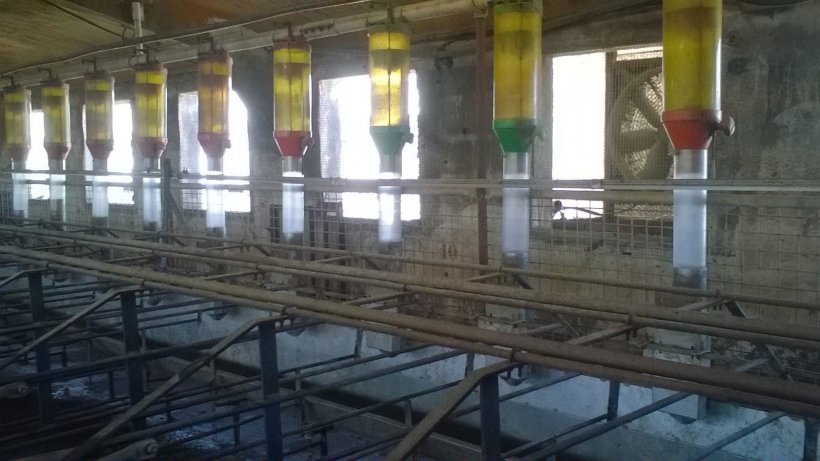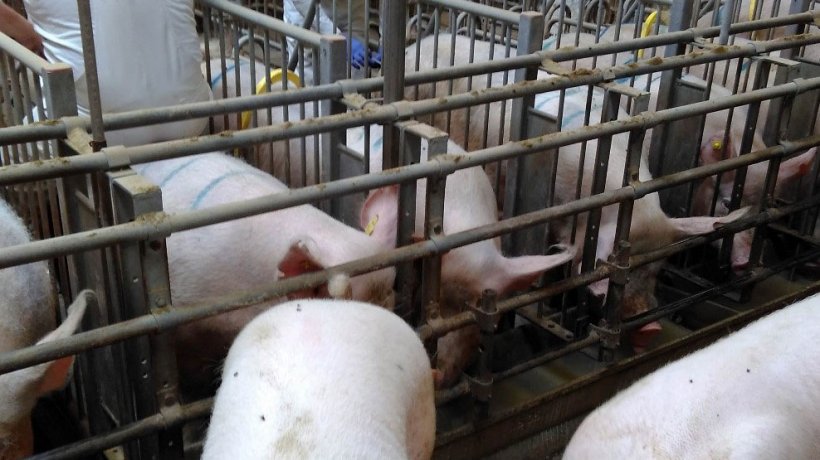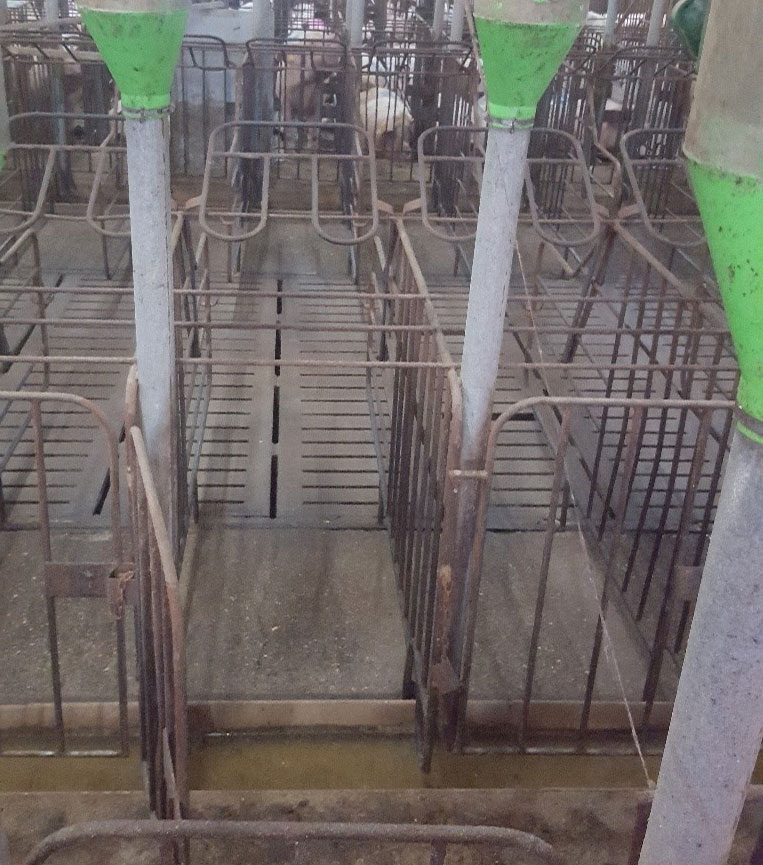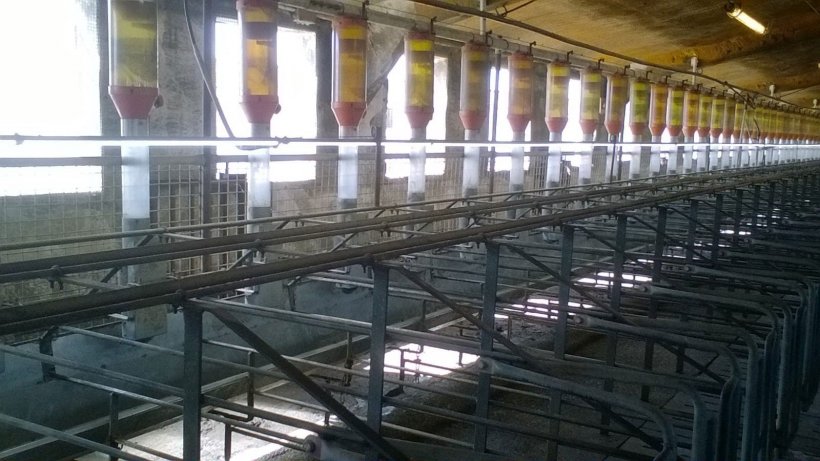In spite of its apparent simplicity, the mating/early gestation barn has enough elements to warrant our assessing their advantages and disadvantages.
In the first article on this area, technicians Javier Lorente, Lluís Ferrer and Joan Aparicio discussed issues related to the barn design. This article deals with more specific elements.

Feeding
Increasing importance is given to feeding in the period from weaning to oestrus. The most usual recommendation is to provide the sows with a high level of feeding during these days, with the aim of favouring their return to oestrus and a good ovulation, that results in a high prolificacy in the next farrowing.
Another issue is whether it is easy to implement this feeding regime in the daily practice because of the very different ways sows eat these days. This is why this subject raises some debate. Lorente recommends that the area of heat detection (AHD) has a different feeding circuit, so that a specific feed can be given for this stage, or even to provide an additional daily meal from weaning to mating.
For Aparicio, to provide a different feeding regime to the sows in the weaning-to-mating phase is also extremely important. He recommends placing a silo in this area, and fix the feed dispensers with a double feeding input, so they can provide different feeds.
Ferrer says that, although it is not something that is usually found on farms, a ball-type feeder system to provide ad libitum feeding could be practical during these days (Photo 1).

Photo 1. To achieve high feed consumption in the days that go from weaning to oestrus, avoiding a waste of feed at the same time, feeding systems like the one shown in the photo can be an option. Image courtesy of Gori Salamó.
Feeders
For Aparicio, the best system is the one that has gained popularity in recent years: troughs designed to run continuously for an entire row of sows. They work without nipple waterers, and usually through a constant water level, normally controlled by a level valve.
Although he agrees, Ferrer thinks that too often those long troughs are combined with an excessive water level. This causes the feed to move with the water, thus making it impossible to individualize the feeding, as this phase would require. And remember that those long troughs —he says—, unlike the individual feeder, do not guarantee each sow eating 100% of its ration, since some sows can "steal" feed from their neighbours. Therefore, it is important to group the sows by body condition with this type of feeder.
Stall and flooring
For Lorente, the most important thing is that the stalls in this area do not have bars on top. "I am in favour of a strong stimulation of the sow before insemination, including being able to enter the stall if necessary. Therefore, there should be no bars above" (Photo 2).

Photo 2. Stalls in the breeding area must allow easy access for a correct stimulation of the sows before insemination
There are two types of stalls in the market: with only rear doors and with front and rear doors.

The 3 authors agree that stalls with only backdoors are best. The locking mechanisms of front doors are often easy to open, which results in the presence of loose sows on the farm. For JA, it is basic that the back door opens easily.
Regarding the floor, it is most common to have a solid part in front of the sow and then, concrete slats at the back, to keep the sow cleaner.
Lorente explains that it is important that the slats show some progression, increasing the slot between the beams from the front to the back. And that the beams are perpendicular to the axis of the sows, to allow them to get up and lie down better, without slipping. (Photo 3).

Photo 3. Stalls with front and rear doors facilitate the task of getting sows in and out the stalls. In these cases it is important that the feeder does not protrude above ground level, and that the front door locking systems are safe, so that teasing boars cannot open them.
Light
I notice that this is a subject that generates some scepticism... There is no doubt the farms should have good lighting. Although we find recommendations for high levels of lux (150-200 lux above the sow´s eyes) (Photo 4) there is little scientific evidence in this regard.

Photo 4. Installation of fluorescent tubes or LED lights 1 meter above the sows is getting more frequent as to guarantee 150-200 lux, in order to improve the return to oestrus. Photo courtesy of Gori Salamó.
Ferrer is, again, very practical; additional lighting may be important in some farms, but why not take advantage of natural sunlight? He says: I do not understand why many farms place their sows with their backs to the windows. If we did it the other way around, artificial light would not be needed for many hours of the day.
"Lorente, in the "ideal" farm would ensure a good light level at 1 meter above the sow, but for him, although we do have to ensure 14-16 hours of light, this is not the most essential feature.
Environment
For Ferrer, the insulation in the gestation barn is one of the forgotten issues. Given the adult sows’ good cold resistance, low temperatures are frequently not avoided in winter, causing sows to lose weight which, in turn, causes an increase in feed consumption.
There is no doubt among the authors; the environment must be controlled, with cooling systems for summer.
Lorente thinks the design of the building depends on the geographical area it is located in: "In very hot areas, tall buildings with plenty of volume are recommended. In cold areas, less volume is needed, and ventilation through a false ceiling.
These two consecutive articles have broken down the design and elements of the mating and early gestation barns. The design and the elements that are chosen will have an influence on such important aspects as the sows’ return to oestrus, fertility and prolificacy, as well as in the time required by the tasks of heat detection and insemination performed there. Therefore, when designing these barns , it is important to pay attention to the different possibilities.









